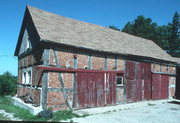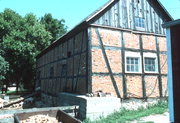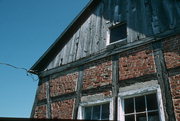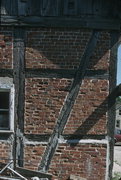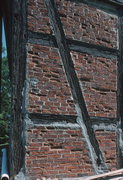| Additional Information: | A 'site file' exists for this property. It contains additional information such as correspondence, newspaper clippings, or historical information. It is a public record and may be viewed in person at the Wisconsin Historical Society, State Historic Preservation Office.
TRUE 1/2 TIMBER CONSTRUCTION W/RED HUSTIFORD BRICK NOGGING. VERTICAL BOARDS IN GABLE. 6 PANED WINDOWS. APPROX 50 X 20 FT. HABS WI-151.
Around 1850, August Paetsch arranged for the construction of this Stall, or stable, built using an Old World timber-framing technique known as fachwerk (“framework”). Paetsch had emigrated to the United States from Prussia in northeastern Germany, where fachwerk had become a well-established building method by the Middle Ages. It gained popularity in the sixteenth century, when the depletion of German forests made it impossible to build traditional solid-log buildings. It also saved the trouble of hewing and shaping hardwood logs. Fachwerk persisted among German-speaking immigrants in some areas of Wisconsin even when others adopted lighter construction techniques. An eight-county region, including Dodge, Jefferson, Washington, Ozaukee, Sheboygan, Manitowoc, Marquette, and Green Lake counties, has the largest known concentration of fachwerk buildings in the United States.
The barn’s skillful master carpenter framed the building with hewn white-oak timbers, which he joined with mortises, tenons, and wooden pegs. After laying the squared sills on a rubble masonry foundation and fastening the corners with pegged lap joints, he positioned the posts at regular intervals and affixed them to horizontal timbers, forming the squarish panels characteristic of fachwerk. Finally, he secured the end walls with diagonal braces. Once he completed the framework, he filled the openings between the timbers with brick nogging. Evidence suggests that he sheltered the barn with a thatched roof, lashing bundles of rye straw to long laths or poles that ran perpendicular to the rafters, but someone replaced the thatch long ago.
Oak and elm timbers mortised, tenoned and pegged with red brick and mortar sections. In 1967 used as workshop, storage and hog house. |
|---|

